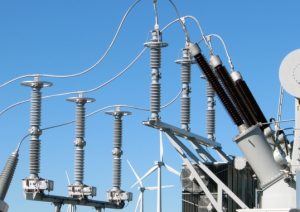In today’s world, where electronics dominate our personal and professional lives, protecting these devices from power surges is paramount. A power surge can happen in a blink of an eye, yet the damage it inflicts on your electronics can be irreversible and costly. Therefore, investing in good surge protection is not just a choice; it’s a necessity. This comprehensive guide delves into the intricacies of selecting top-rated surge protectors, highlighting the importance of specifications, performance metrics, and the underlying technology that safeguards your valuable electronics.
Understanding Surge Protection
Surge protection devices (SPDs) play a crucial role in guarding against transient voltage spikes that can damage or degrade electronic devices. These spikes can originate from various sources, including lightning strikes, power outages, and switching operations in the power grid.
Key Features to Consider
When selecting a surge protector, it’s essential to consider several key features that directly impact its effectiveness:
- Joule Rating: This metric represents the energy absorption capacity of the surge protector. A higher joule rating indicates a higher capacity to protect against power surges. For optimal protection, look for devices with a joule rating of at least 2000.
- Clamping Voltage: The clamping voltage specifies the level at which the surge protector begins to restrict the surge. A lower clamping voltage means the device offers protection sooner, with ratings typically ranging between 330V to 400V.
- Response Time: Surge protectors should react quickly to suppress a surge. The ideal response time is less than one nanosecond, ensuring immediate protection from sudden voltage spikes.
- UL Certification: Ensure the surge protector has Underwriters Laboratories (UL) certification, guaranteeing it meets strict safety standards.

Advanced Protection Technologies
Innovations in surge protection technology have led to the development of devices that offer superior safety and durability. These advancements include:
Improved Material Quality
Manufacturers now use high-quality, robust materials that enhance the longevity and performance of surge protectors. For example, the use of metal oxide varistors (MOVs) offers excellent transient suppression capabilities, ensuring reliable protection over time.
Smart Technology Integration
Smart surge protectors come equipped with diagnostic tools and connectivity features, allowing for real-time monitoring of electrical health. This technology enables users to identify and address issues promptly, minimizing the risk of damage.
Cost and Efficiency Considerations
When investing in surge protection, it’s crucial to balance cost, efficiency, and the level of protection required:
- Cost: The price of surge protectors can vary significantly, ranging from $20 for basic models to over $200 for advanced units with smart technology. The investment should align with the value of the electronics being protected.
- Efficiency: High-quality surge protectors offer greater efficiency, with minimal energy loss during operation. This efficiency is crucial for maintaining the performance and lifespan of connected devices.
- Specifications: Paying attention to specifications like joule rating, clamping voltage, and response time is vital. These parameters directly influence the effectiveness of the surge protector.
In conclusion, equipping your home or office with a top-rated surge protector is a critical step towards safeguarding your electronic devices from unforeseen power surges. By focusing on key features, embracing advanced technologies, and considering cost-efficiency, you can ensure your investments remain protected for years to come.